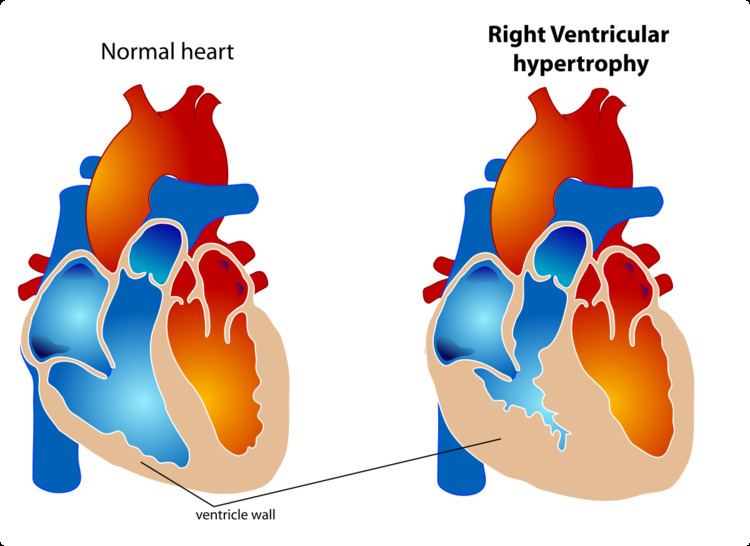Specialty cardiology ICD-9-CM 429.3 MeSH D017380 | ICD-10 I51.7 DiseasesDB 11623 | |
 | ||
Right ventricular hypertrophy (RVH) is a form of ventricular hypertrophy affecting the right ventricle.
Contents
Blood travels through the right ventricle to the lungs via the pulmonary arteries. If conditions occur which decrease pulmonary circulation, meaning blood does not flow well from the heart to the lungs, extra stress can be placed on the right ventricle. This can lead to right ventricular hypertrophy.
It can affect electrocardiography (ECG) findings. An ECG with right ventricular hypertrophy may or may not show a right axis deviation on the graph.
Causes
Common causes include:
ECG findings
General ECG features include:
Specific ECG features (assumes normal calibration of 1 mV = 10 mm):
Other chest lead criteria:
ST segment depression and T wave inversion in right precordial leads is usually seen in severe RVH such as in pulmonary stenosis and pulmonary hypertension.
